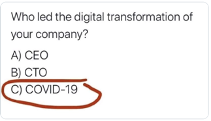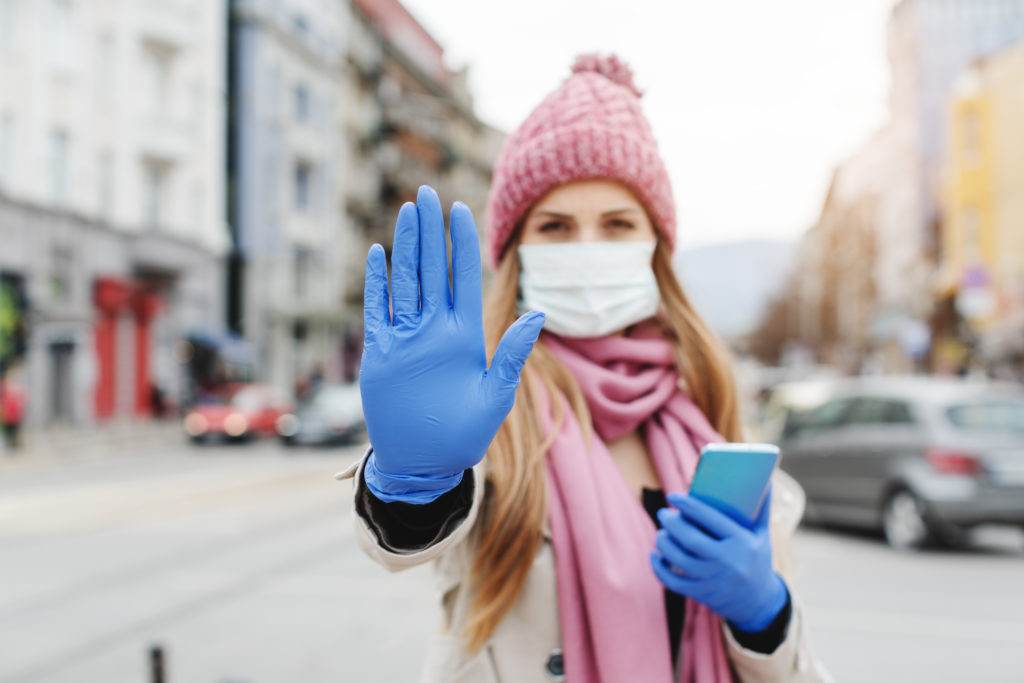Last year, our President and Founder, Daniel Rodgers spoke at The Airport Food and Beverage (FAB) Conference and Awards about how to change consumer behavior. In Dan’s example, his favorite bus stop was crashing into. This created a burning platform situation, whereby it drove a change in his behavior. COVID-19 just set the whole hospitality sector on fire and everyone just had to jump off the platform. We now need to build a new platform, with a whole new set of service models and behaviors.
Customers are now not only receptive to new ways of engaging, they will expect it if they are to regain confidence in hospitality service. Up until now, self-service technology in the industry has largely been a ‘nice to have’ and it’s something restaurant brands have had varying success at when trying to encourage adoption. As we look towards restaurants opening for business again, the embracing of new technologies such as digital ordering for collection and delivery and self-service payment will be a key part of social distancing measures.
In March 2020, governments around the world, imposed restrictions of different degrees on its citizens and businesses including restaurants, pubs, takeaways and other food retailers. As restaurants were forced to close on-site dining and people were asked to stay at home, brands had to adapt quickly to ensure their existence. Daniel picks up on the impact of this lockdown and subsequent shift in consumer behavior:
Our whole world got hit by a bus, not just my bus stop! I saw a fantastic little post which was a multiple-choice question:

The reality is, restaurants will need to make changes to their operations, services and physical stores to ensure the safety of their staff and customers and to restore consumer confidence in order to survive. Everyone is going to have to learn and adapt to a new normal.
In my last post, I spoke about how difficult it was to change consumer behavior. Now, thanks to lockdown, there’s not so much of a need to change behavior as people have been forced into doing things they may not normally have done, be it digital ordering, online banking or video conferencing as just a few examples. Since lockdown, we’ve seen some traditionally dine-in restaurants adopt online ordering for pick-up or delivery to create a revenue stream whilst they ride the pandemic out. But this isn’t the whole story. When we come out of lockdown, restaurants and other food and drink businesses will have to rethink the way they operate to adjust to new conditions such as a reluctance to touch cash and continued social distancing requirements.
A call for cashless
It’s hard to accurately predict what the actions of people will be once lockdown restrictions are eased but if we look at the way supermarkets have adapted their current operations, we could get a clearer picture. Some of the changes supermarkets have put in place include requesting people pay by card to reduce cash handling, redirecting resources to fulfil huge increases in online orders, getting shoppers to wait outside to reduce overcrowding, making sure customers stay at least two meters apart inside the shop, installing Perspex partitions at checkout and, of course, continual cleaning.
For restaurants, operators might not need to discourage the use of cash. People may be less willing to handle it now. The use of cash has been on the decline for many years anyway. In the UK for example, cash accounts for only 27% of transactions and across EMEA, cash transactions are expected to reduce from 44% in 2019 to just 29% in 2023. The decline in cash will be accelerated post-lockdown as people will be cautious of handling notoriously dirty money. Cash and payment devices are well regarded as being particularly ‘dirty’. In recent studies, a £1 coin was found to have 26,000 different kinds of bacteria, and payment devices (chip and pin terminals) more that 3,000. A typical payment device will be involved in 300 to 1000 interactions a week. Reducing the necessity to interact with these items will help protect customers and staff.
To help meet the preferences of customers of not handling money, restaurants can use pay at table technology that allows guests to use their own mobile devices to pay for their meals. Not only do they not have to handle money, but they won’t need to wait for or touch a PED device or interact further with staff allowing them to reduce unnecessary contact.
And it’s not just on-premise that benefits from going cashless. During lockdown, restaurants and takeaways were asked not to take orders on site. By getting guests to go online to click and collect or order for delivery/curbside pick-up, operators can protect their staff and customers by minimizing the need to touch cash, as well as reduce their cash handling costs.
Social distancing
Having to keep at least two meters apart once lockdown is over, will prove, at best difficult and, at worst impossible for some restaurants, especially those with limited floor space. Some restaurants have indicated that they will be ‘booking only’ to ensure limited numbers onsite and won’t allow people to stand at their bars whilst waiting for their tables. By going booking-only, there’ll be a knock-on effect on revenues meaning profitability will have to be protected. Brands will need to think carefully about staffing levels and how automation can help them save money. Looking at it another way, booking-only could also present a paid for wait-list opportunity for particularly sought-after brands!
COVID-19 has become the major health and safety issue for the industry and operators will need to focus on staff safety as much as their customers’. They’ll need to think about how to limit the use of items staff touch the most for example the till or payment devices that can get handed to over 600 people a month. Operators might also consider supplying face masks and additional cleaning materials such as hand sanitizer and wipes and some brands like McDonalds are even taking the temperature of their staff before each shift to ensure safety.
Customer flow through premises will be an important consideration. For example, quick service restaurants could deploy self-service kiosks to prevent lines at the counter and reduce contact with staff. Of course, to ensure customers’ confidence, stringent cleaning measures will need to be in place and hand sanitizer and disinfectant wipes made clearly available. All restaurants will need to think about narrow corridors leading to restroom facilities for example and how to ensure safe distances through those areas. Even very simple measures such as keeping doors wedged open so people don’t have to touch the handle to move through areas will help reduce potential cross contamination.
Tables within restaurants may have to be moved further apart which means reduced covers for operators. Restaurants could minimize the impact of this by increasing tables turns by speeding up service through mobile order and pay or by offering click and collect as an alternative revenue stream. Curb-side collection could also increase post lock-down as restaurants try and keep the number of people in-store to a minimum.
They can reduce contact further by allowing guests to browse disposable menus or – a less wasteful solution – view digital menus on their own phones, letting them order and pay themselves, without the need to touch a physical menu, cash or even a PED device.
Quick service brands that were previously focussed on their drive-thru and drive-up initiatives will likely accelerate these programs as they provide a neat way of trading yet maximizing distance between staff and customers and between customers themselves. By allowing guests to use their phones to pay at drive through services, they’ll only ever have to interact with staff once when their food is handed to them. Drive-up is the same. Customers can drive into a parking bay, order and pay for their meals using their own devices and when their meal is ready, the server can hand it straight to them.
What is the ‘new normal’?
Throughout this crisis, many people have been referring to their changed situation and changed behavior as ‘the new normal’. And in many ways, it is. People who previously shied away from technology have been forced into going digital to ensure they can stay connected to a world that has been so restricted physically. But the new normal isn’t static. Before restrictions ease, operators will need to be on the front foot to service a new, socially distant, cashless world. They’ll need to really examine their day-to-day operations and find realistic and affordable ways to adjust just to keep themselves in the game.





